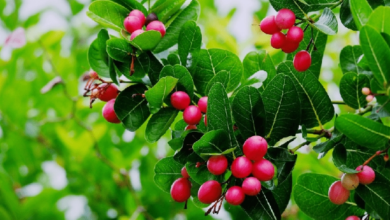Discovering the Delights of Buší: A Taste of Congolese Cuisine

In the heart of the Democratic Republic of Congo, there’s a dish Buší that brings families together and tantalizes taste buds—it’s called Buší. Buší is more than just food; it’s a cultural experience, passed down through generations as a symbol of unity and tradition. Let’s delve into the world of Buší and uncover what makes this dish so special.
Introduction to Buší
Buší is a traditional Congolese dish made from hearty leafy greens, onions, garlic, and a blend of aromatic spices. It’s a wholesome and flavorful meal that reflects the bounty of the land and the ingenuity of Congolese cooking. The preparation of Buší involves stir-frying the greens with onions and spices until they are tender and bursting with flavor. It’s a dish that embodies the warmth and hospitality of Congolese culture.
The Origins of Buší
Buší originates from the Democratic Republic of Congo, where it has been a cherished part of traditional cuisine for generations. The dish reflects the resourcefulness of Congolese cooking, using locally available ingredients like collard greens, kale, and spices. It’s believed that Buší emerged from indigenous farming practices and the need to create nourishing meals from simple, nutritious elements. Over time, Buší has become intertwined with Congolese culture, serving as a symbol of community and heritage. The name “Buší” itself carries a sense of history and belonging for those who prepare and enjoy this dish.
Ingredients of Buší
Buší is crafted from a handful of key ingredients that come together to create its distinctive flavors. Collard greens and kale form the base of this dish, providing a nutritious foundation. Onions and garlic add depth and aroma, enhancing the savory profile of Buší. A blend of spices, such as paprika, cayenne pepper, and ginger, imparts a delightful kick to the dish. These ingredients are combined through stir-frying, allowing their flavors to meld and develop into a harmonious blend of tastes. Buší is a prime example of how simple ingredients can be transformed into a flavorful and satisfying meal.
Cooking Techniques for Buší
To prepare Buší, start by washing and chopping the collard greens and kale into bite-sized pieces. In a pan, heat some oil and sauté chopped onions and garlic until they turn golden and fragrant. Add the greens to the pan and stir-fry them until they wilt and become tender. Season the mixture with spices like paprika and cayenne pepper, adjusting to taste. Allow the flavors to meld together over low heat, ensuring that the Buší is well-cooked but still vibrant in color and texture. The cooking process of Buší is straightforward, emphasizing the importance of fresh ingredients and careful seasoning.
Health Benefits of Buší
Buší offers a host of health benefits due to its nutritious ingredients. Collard greens and kale are rich in vitamins, minerals, and antioxidants, supporting overall health. These leafy greens are known for their role in promoting digestion and providing essential nutrients. Additionally, onions and garlic contribute antimicrobial properties and enhance the immune system. The spices used in Buší, such as ginger and cayenne pepper, have anti-inflammatory effects and can boost metabolism. Incorporating Buší into your diet not only delights the palate but also nourishes the body with vital nutrients.
Cultural Significance of Buší
Buší holds deep cultural significance in the Democratic Republic of Congo, where it is enjoyed as a staple dish for communal gatherings and celebrations. It symbolizes unity and togetherness, bringing people closer through shared meals and traditions. The preparation of Buší often involves multiple family members, reflecting the importance of collective effort and cooperation in Congolese culture. This dish is not just about sustenance but also about fostering connections and preserving cultural heritage.
Variations of Buší
Buší offers ample room for culinary experimentation and personalization. One popular variation includes adding protein-rich ingredients like beans or tofu to create a heartier dish. Another option is to incorporate different leafy greens or vegetables, allowing for seasonal adaptations. Some regions of the Democratic Republic of Congo may have their own unique twists on Buší, showcasing regional flavors and preferences. The versatility of Buší enables individuals to tailor the dish according to taste preferences and ingredient availability.
Buší in Family Traditions
In many Congolese households, Buší holds a special place in family traditions. It is often prepared during festive occasions, family reunions, and gatherings to celebrate milestones. The act of cooking and sharing Buší reinforces familial bonds and strengthens generational ties. Older family members pass down their Buší recipes and cooking techniques to younger generations, ensuring that this culinary tradition continues to thrive and evolve over time.
Serving Buší
Buší is typically served as a main dish accompanied by side dishes like fufu (a dough-like dish made from cassava flour) or rice. The combination of Buší with these accompaniments creates a well-rounded and satisfying meal. When presenting Buší, it’s common to garnish it with fresh herbs or a drizzle of palm oil for added flavor and visual appeal. The vibrant colors and aromas of Buší make it an inviting centerpiece for any dining table, inviting everyone to gather and share in its deliciousness.
Buší and Community Celebrations
Buší plays a central role in community celebrations and cultural events in the Democratic Republic of Congo. It is often prepared in large quantities to feed a crowd, emphasizing the communal aspect of Congolese cuisine. During festivals and gatherings, Buší serves as a unifying element, bringing people from different walks of life together to enjoy a shared meal. This dish exemplifies the spirit of hospitality and generosity that defines Congolese culture.
Buší: A Journey Through Taste
Preparing and enjoying Buší is akin to embarking on a flavorful journey through the Democratic Republic of Congo. Each bite tells a story of tradition, resilience, and the vibrant spirit of Congolese cuisine. The bold flavors and comforting textures of Buší evoke a sense of warmth and hospitality, inviting everyone to partake in a cultural experience. Whether shared with loved ones or savored alone, Buší offers a taste of Congolese heritage and a celebration of culinary craftsmanship.
Celebrating Buší: Festivals and Culinary Events
Buší is prominently featured in culinary events and festivals across the Democratic Republic of Congo, where chefs and cooks showcase their creativity and skill with this beloved dish. These gatherings celebrate the diversity of Congolese cuisine and highlight Buší as a culinary treasure. Visitors and locals alike flock to these events to indulge in different interpretations of Buší and to appreciate the craftsmanship behind each preparation. Such festivals serve as platforms for preserving and promoting traditional dishes like Buší for future generations.
Conclusion
Buší is more than just a dish; it embodies the heart and soul of Congolese culture, reflecting the rich history, communal values, and culinary creativity of the Democratic Republic of Congo. This traditional meal brings people together, whether at family gatherings, community celebrations, or culinary events, fostering bonds and preserving cultural heritage.
The journey through Buší is a sensory experience, from the vibrant colors of the fresh ingredients to the comforting aromas that fill the kitchen. Each variation tells a unique story, showcasing the versatility of this dish and the ingenuity of Congolese cooks who continue to innovate while staying true to tradition.




